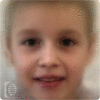Clinical Description
KMT2E-related neurodevelopmental disorder (KMT2E-NDD) is a condition characterized by global developmental delay, variable intellectual disability (typically mild to moderate), and hypotonia [O'Donnell-Luria et al 2019, Velmans et al 2022]. To date, 61 individuals have been reported in the medical literature with a pathogenic variant in KMT2E [O'Donnell-Luria et al 2019, Conforti et al 2021, Li et al 2021, Sharawat et al 2021, Abreu et al 2022, Cao et al 2022, Lee et al 2022, Velmans et al 2022]. The following description of the phenotypic features associated with this condition is based on these reports.
Developmental delay (DD) and intellectual disability (ID). Almost all individuals with KMT2E-NDD present with global developmental delay. The majority are verbal but experience speech delays with or without articulation problems. A few individuals were reported to have speech regression. Four individuals with pathogenic missense variants were not verbal [O'Donnell-Luria et al 2019]. All reported individuals older than infants have been able to obtain independent ambulation, though many were delayed in achieving this milestone, and most presented with additional motor delays [O'Donnell-Luria et al 2019, Velmans et al 2022]. Intellectual disability, usually in the mild-to-moderate range, has been reported in a majority of affected individuals [O'Donnell-Luria et al 2019, Velmans et al 2022].
Seizures. Almost one third of reported individuals have developed seizures. There is no consistent seizure semiology or epilepsy syndrome described in individuals with KMT2E-NDD.
About 14% of individuals with protein-truncating pathogenic variants have been reported to have seizures (two with unprovoked seizures, one with a single seizure, and two with treatment-resistant epilepsy).
Two individuals (one with a missense pathogenic variant and the other with a frameshift pathogenic variant) are known to have experienced developmental regression with some improvement in epilepsy when started on a ketogenic diet, so careful monitoring should be in place if this therapy is considered (see Management) [O'Donnell-Luria et al 2019; A O'Donnell-Luria, personal observation]. More evidence is needed to determine if ketogenic diet is contraindicated in individuals with this condition.
Neurobehavioral/psychiatric problems
Some affected individuals have behavioral concerns other than ASD; stereotypies, skin-picking behavior, self-injurious behavior, aggression, anxiety, and sensory integration disorder has been reported in 17% of individuals. At least two affected individuals have been diagnosed with attention-deficit/hyperactivity disorder (ADHD) [
O'Donnell-Luria et al 2019,
Velmans et al 2022].
Musculoskeletal features / tone abnormalities
Hypotonia is reported in about 46% of individuals with KMT2E-NDD. In two individuals, this presented as feeding difficulties in the newborn period. There is not enough data to determine if hypotonia resolves with time, although it tends to improve with age.
Growth. Growth parameters can be variable, but most are in the normal range for length/height and weight, both at birth and later in life. About half of individuals have macrocephaly (>2 standard deviations above the mean, i.e., z score for age >2) or relative macrocephaly (defined as head circumference z score for age 1 or more points higher than the length z score). Several individuals with pathogenic missense variants had microcephaly (see Genotype-Phenotype Correlations) [O'Donnell-Luria et al 2019, Velmans et al 2022].
Gastrointestinal issues, including gastroesophageal reflux, vomiting, and/or reduced bowel motility has been reported in almost 50% of affected individuals [O'Donnell-Luria et al 2019, Velmans et al 2022]. Constipation was the most frequently reported gastrointestinal issue and is likely related to low muscle tone.
Sleep disturbance. About half of affected individuals have some type of sleep disturbance, including frequent awakening and difficulties falling asleep [Velmans et al 2022]. While data on sleep issues are limited, mild sleep apnea has only been reported in one affected individual [A O'Donnell-Luria, personal observation].
Facial features. If present, dysmorphic features are usually subtle and nonspecific. Facial features including dolichocephaly, tall forehead, deep-set eyes, periorbital fullness, malar prominence, and prominent nasolabial folds are seen in a subset of affected individuals (see ) [O'Donnell-Luria et al 2019, Li et al 2021, Velmans et al 2022]. A composite facial phenotype is provided in . However, no recognizable dysmorphic pattern has been observed in individuals with this condition.
Composite figure analysis of the facial phenotype of individuals with KMT2E-related neurodevelopmental disorder in Figure 1, excluding Individual 30, who is wearing glasses Reprinted with permission from O'Donnell-Luria et al [2019]
Neuroimaging. Brain imaging was reported as normal in most affected individuals who underwent imaging. About 20% showed nonspecific findings, such as abnormal corpus callosum, signal abnormalities in the white matter, decreased volume, ventriculomegaly, pachygyria, delayed myelination, small areas of heterotopia, or small localized cysts [O'Donnell-Luria et al 2019, Velmans et al 2022]. Hydrocephalus has not been reported.
Prognosis. It is unknown whether life span in KMT2E-NDD is abnormal. One reported individual is alive at age 54 years [Conforti et al 2021], demonstrating that survival into adulthood is possible. Since many adults with disabilities have not undergone advanced genetic testing, it is likely that adults with this condition are underrecognized and underreported.



